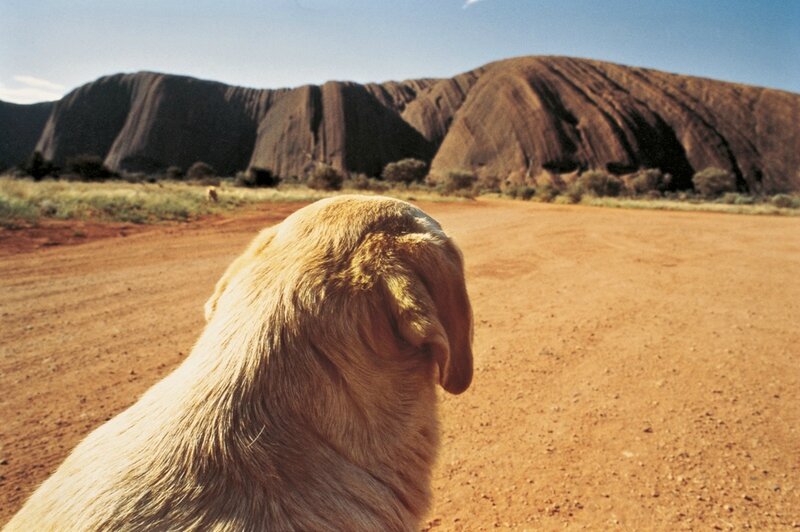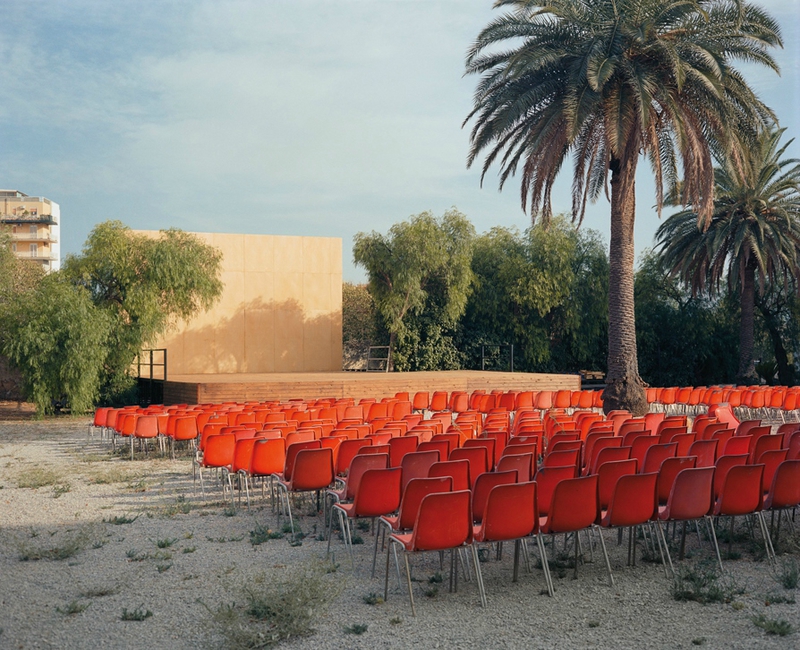"4 REAL & TRUE 2. WIM WENDERS Landscapes. Photographs." at Museum Kunstpalast
Wim Wenders, 2015. Photo: Peter Lindbergh
If you travel a lot, writes Wim Wenders, if you like roaming about in order to lose yourself, you can end up in the strangest places. I think it must be a kind of built-in radar, which often takes me to places that are either peculiarly quiet or peculiar in a quiet sort of way.
Wim Wenders (born in Düsseldorf in 1945) is internationally renowned primarily for his movies, such as Wings of Desire, Pina and The Salt of the Earth, a portrait of the Brazilian photographer Sebastião Salgado. But the filmmaker acknowledges: Photographic work is the other half of my life. For decades he has created a photographic oeuvre quite independent of his filmic work: photographs of lonely, at times somewhat bizarre places and landscapes, of settings that have their own story.
On the occasion of the artist’s 70th birthday in 2015, Museum Kunstpalast in collaboration with Wenders Images and the Wim Wenders Foundation is presenting a selection of about 80 large-scale photographs, which invariably are analogue creations, made without artificial lighting or tripod. The exhibits range from artist’s early black-andwhite photographs and monumental landscape panorama pictures through to his rarely shown photographs of “Ground Zero” and new works that were made only last year.
Wim Wenders, Joshua and John (behind), Odessa, Texas, 1983. C-Print, 125 x 170 cm © Wim Wenders / Courtesy Blain | Southern
Wenders regards his photographic work, in the truest sense of the word, as an interaction of light (phos) and painting (graphein), offering the scope for capturing a unique moment in time.
Wenders started with black-and-white photographs, and later switched to colour photography. In doing so, his interest in photography blended with his passion for painting. Wenders, who initially applied to study at the Academy of Art Düsseldorf without success and in 1967 finally started to study at the then newly-founded College for Television and Film in Munich, discovered the significance of colours for his work: He began to initially “see” a picture for its colours and to define the image section according to the colours.
Wim Wenders, Dog on the Road to Ayers Rock, 2, Uluru, 1977. C-Print, 124 x 163.7 cm © Wim Wenders / Courtesy Blain | Southern
What I firmly wanted to be, was a painter.
And when pictures really impressed and influenced me,
they were by Vermeer and Rembrandt,
Dutch landscape painters,
later, Klee and Kandinsky and Beckmann,
later still, Edward Hopper and others.
As the filmmaker, which is what I became after some detours
and also as photographer,
I owe infinitely more to the history of painting
than to the history of film or photography.
Perhaps this is why I want to achieve something with my pictures
that is actually rooted in painting.
(From: Wim Wenders, A Sense of Place. Texte und Interviews (texts and interviews), ed. by Daniel Bickermann, Frankfurt am Main 2005, p. 88)
Wim Wenders, Open Air Screen, Palermo, 2007. C-Print, 178 x 205 cm © Wim Wenders / Courtesy Blain | Southern
“Look at this, this exists, I have seen it, I want to show it to you”: This is the attitude, it seems, with which the photographer Wim Wenders returns from his ramblings through the world and the cities, seeking to show us places that might be carrying a waft of an
often quiet melancholy mood, similar to what is perceivable in his films. In contrast to those, however, in his pictures he refrains from telling any stories whatsoever.
Wenders’ photographs are distinctly different from the stills taken from his films: The mostly quiet shots usually devoid of people offer a potential, seducing us to conjure up our own stories.
(Beat Wismer, General Director Museum Kunstpalast)
On many of his photographic works Wenders has written texts, whose rhythms are reminiscent of poems. In these texts he captures his personal impressions, observations and thoughts.
Wim Wenders, Wyeth Landscape, 2000. C-Print, 178 x 228 cm © Wim Wenders / Courtesy Blain | Southern
“one can […] use a camera
like a recording device,
which not necessarily only records sounds,
but records what the place has to say.
In the photograph he tells his story,
being both actual history and fiction.
(From: Wim Wenders, A Sense of Place. Texte und Interviews (texts and interviews), ed. by Daniel Bickermann, Frankfurt am Main 2005, p. 36)
A farm house in a swaying cornfield, a rusty Ferris wheel on an empty field in Armenia, an abandoned open-air cinema in Palermo, a derelict house in the former Jewish quarter of Berlin – Wenders’ photographs rarely show people and yet bear testimony to humanity.
The exhibition is curated jointly by Beat Wismer, General Director Museum Kunstpalast, and Wim Wenders.
18 April 2015 – 16 August 2015
Wim Wenders, Dust Road in West Australia, 1988. C-Print, 178 x 447 cm © Wim Wenders / Courtesy Blain | Southern

/https%3A%2F%2Fprofilepics.canalblog.com%2Fprofilepics%2F1%2F0%2F100183.jpg)
/https%3A%2F%2Fstorage.canalblog.com%2F03%2F02%2F119589%2F96711876_o.jpg)
/https%3A%2F%2Fstorage.canalblog.com%2F11%2F31%2F119589%2F94773502_o.jpg)
/https%3A%2F%2Fstorage.canalblog.com%2F20%2F83%2F119589%2F94772815_o.jpg)
/https%3A%2F%2Fstorage.canalblog.com%2F26%2F72%2F119589%2F75604929_o.jpg)
/https%3A%2F%2Fstorage.canalblog.com%2F59%2F60%2F119589%2F26458628_o.jpg)








/image%2F1371349%2F20240417%2Fob_9708e8_telechargement.jpg)
/image%2F1371349%2F20240417%2Fob_91ce89_x5173-online-caravaggio-the-martyrdom.jpg)
/image%2F1371349%2F20240417%2Fob_d3a4e9_437713486-1653094185460594-71860440393.jpg)
/image%2F1371349%2F20240417%2Fob_961e87_437772831-1653147868788559-54808306367.jpg)